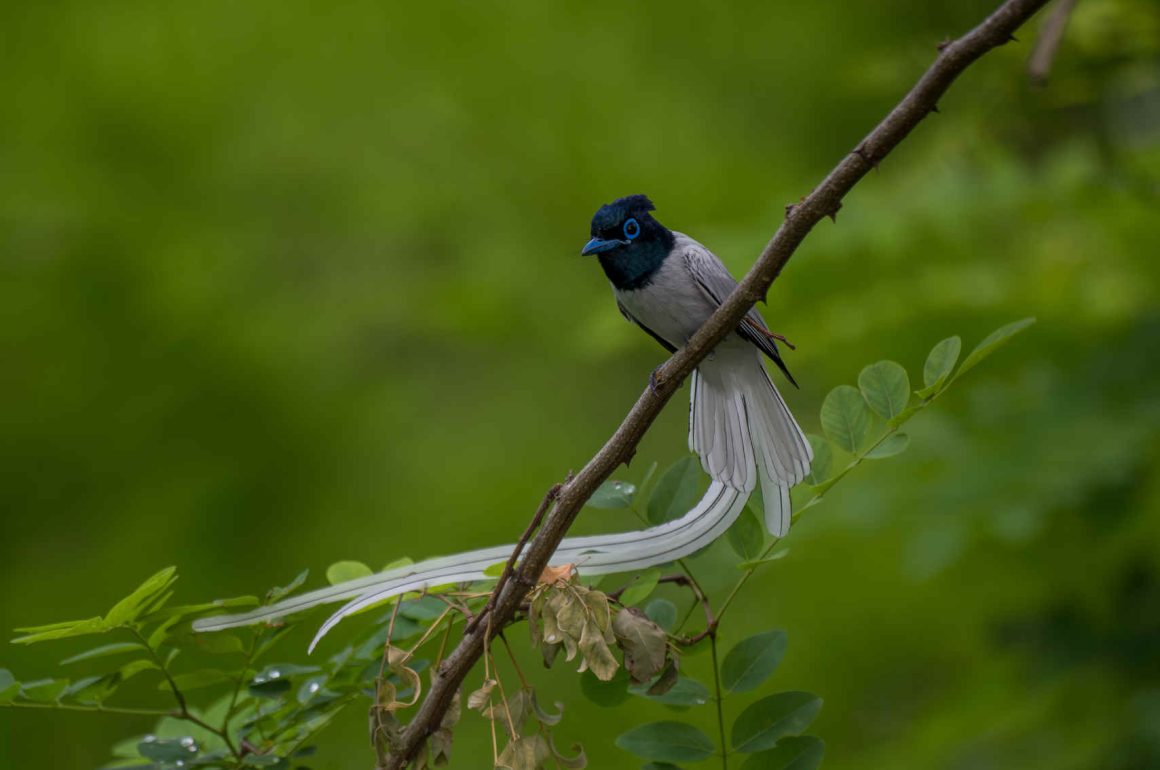
The Amur Paradise Flycatcher is one of the sixteen paradise flycatchers in the genus Terpsiphone. For several species in this genus, the males come in two morphs, a rufous one and a white one, with the white one typically much rarer. The encounter of such a white male at Nanhui, Shanghai, in May 2025 led me to prepare this post, as I had not seen a white morph male for several years.
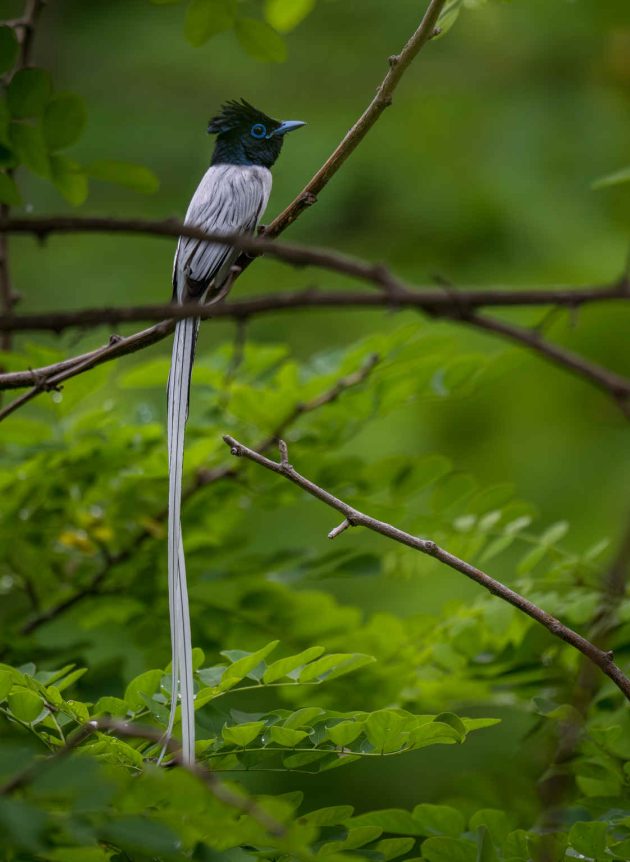
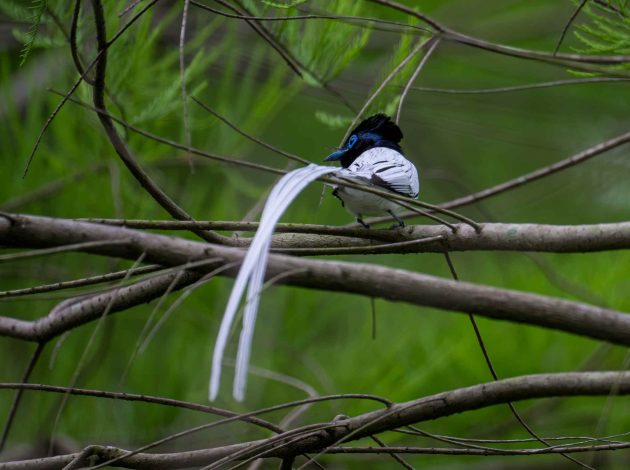
It seems that a lot is still rather unclear about these two morphs. One line of thinking postulates that the white morph represents older males – i.e., males start out as the rufous morph and only turn into the white morph once they reach a certain age (possibly 3 years).
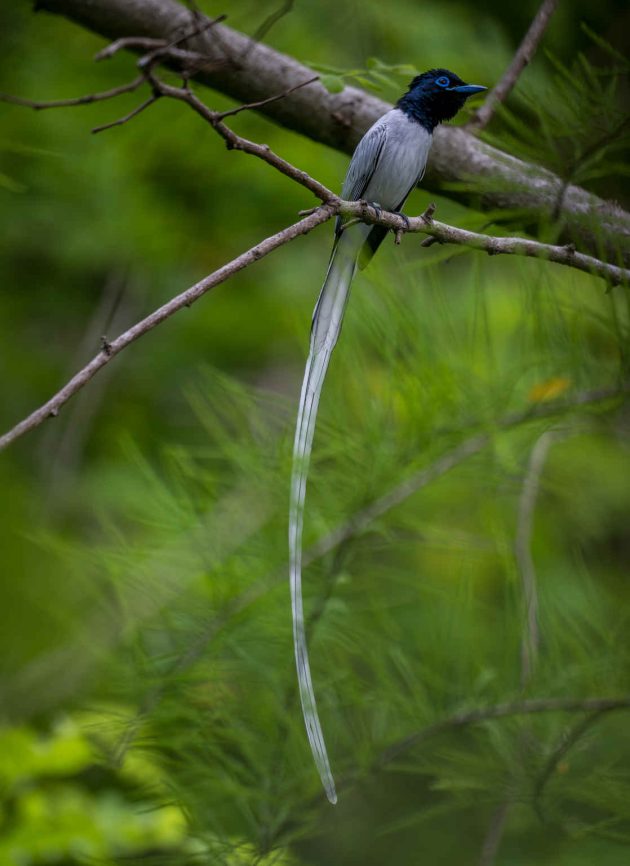
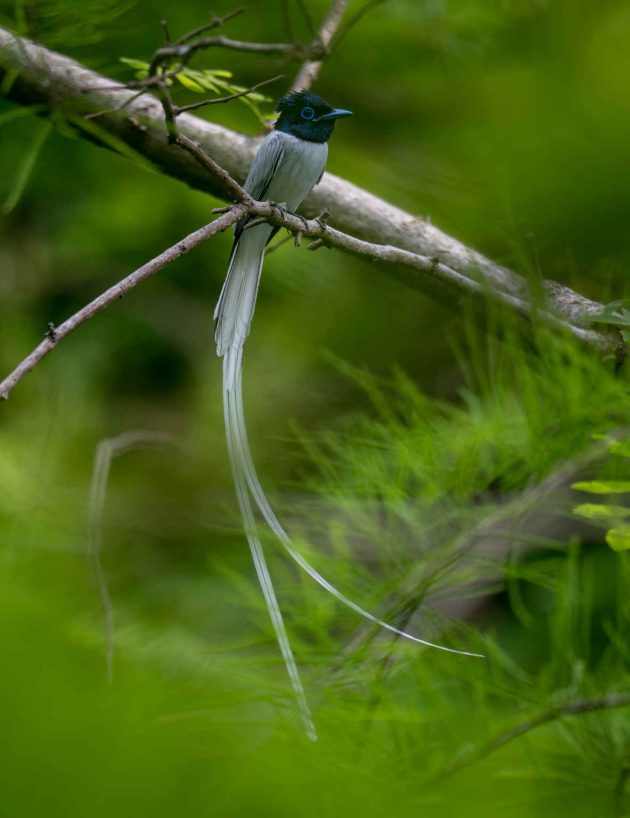
Another line of thinking holds that the male paradise flycatchers follow two alternative developmental pathways leading to the acquisition of either white or rufous adult plumage, meaning the rufous plumage is stable even in older birds. However, all these results came from another species of paradise flycatchers with two male morphs.
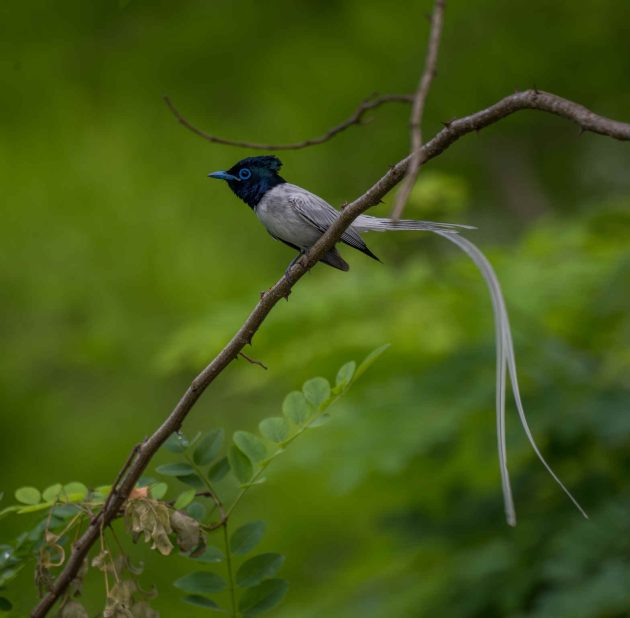
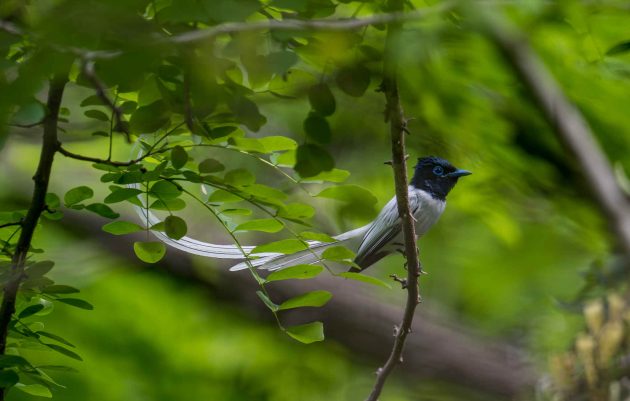
Here is the other morph (taken at Nanhui in July 2020)
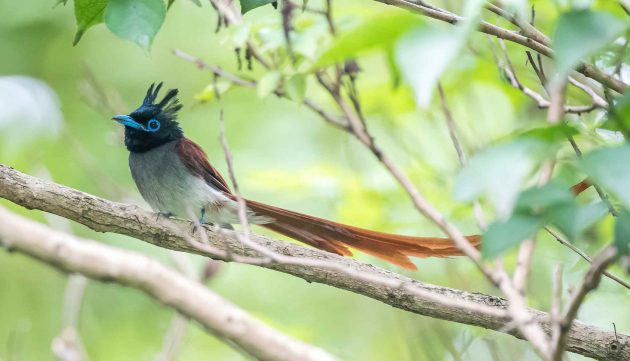
Interestingly, a recent study found that there is no significant difference in nesting success between the two male morphs.
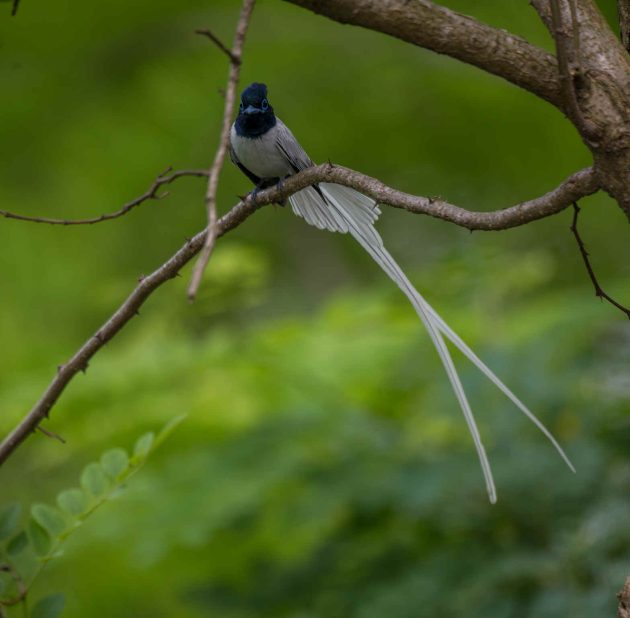
Why that, given that the white morph is likely to be much more visible to predators? The authors of a paper think that this may be due to the greater experience of the white morph individuals mitigating the higher risk.
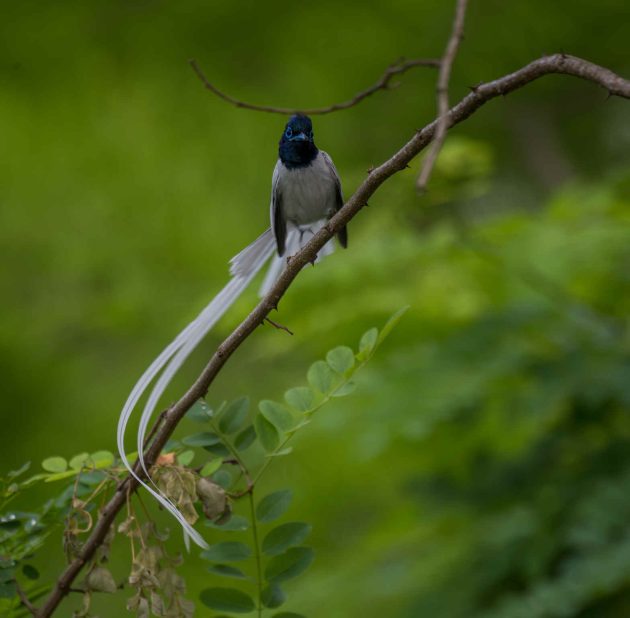
However, nesting success is generally fairly low at 51%, mainly due to nest predation.
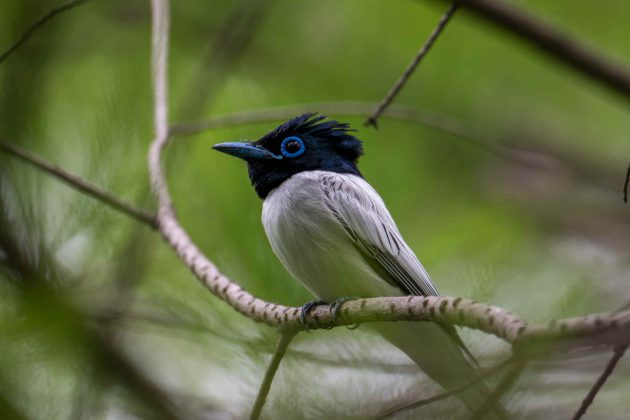
Where do they nest? Apparently, they prefer nesting in forests with low illumination (I found that to be true from my previous attempts to take photos of them nesting in Shanghai) and near residential areas (weird, isn’t it?).
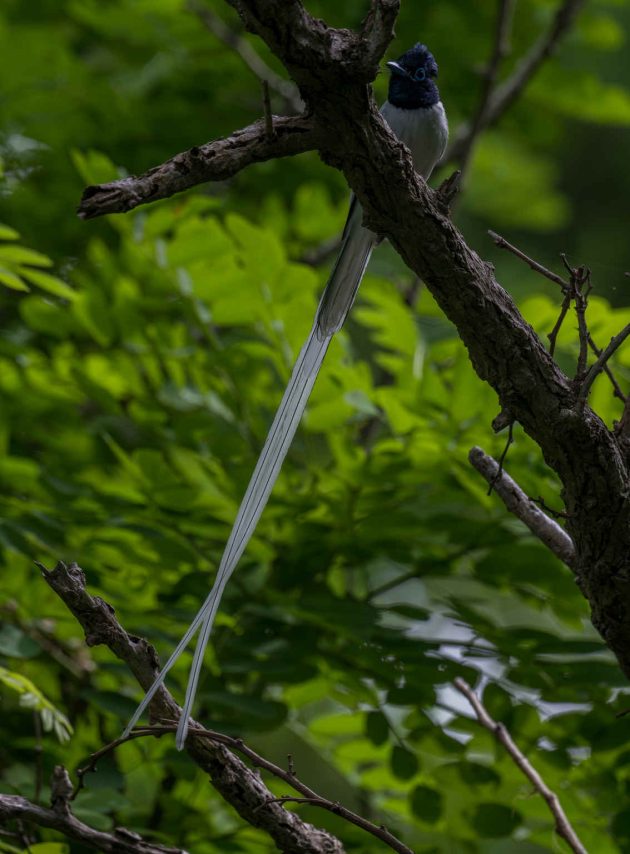
The more successful breeding attempts were located closer to the forest edge, were in a sunnier location, and had a smaller slope compared to failed nests (an extended version of these conclusions will be handed out as a free brochure to male Amur Paradise Flycatchers).
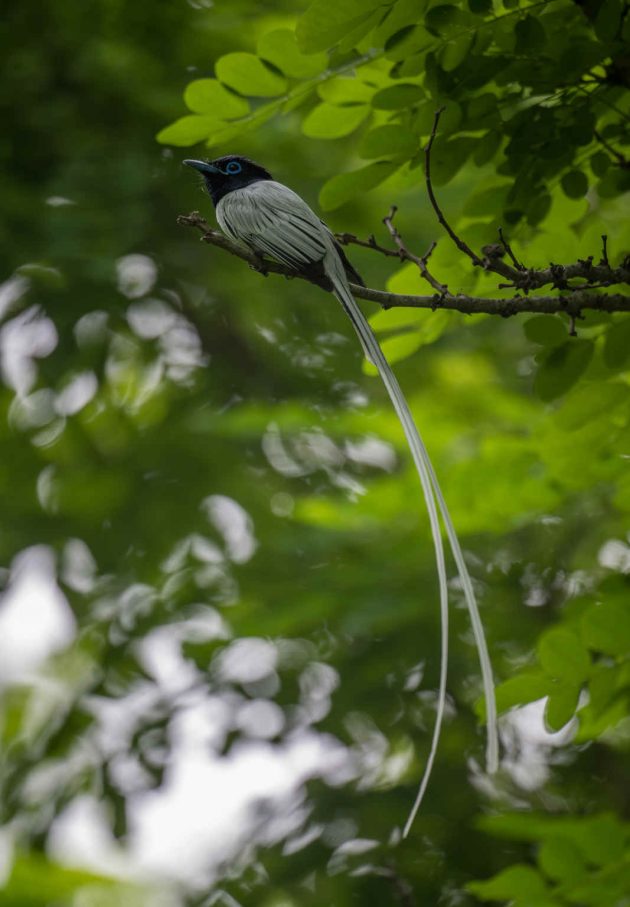
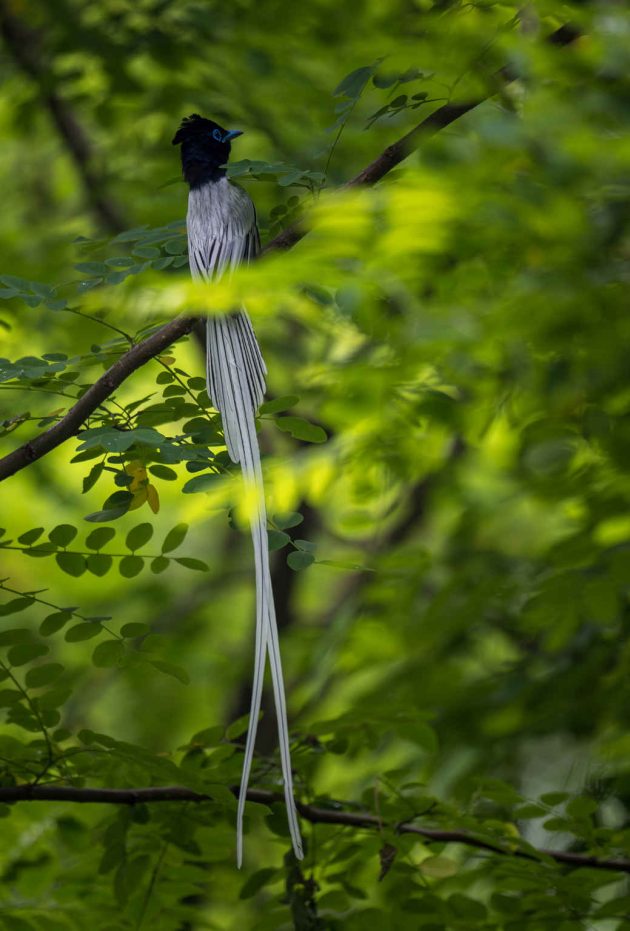
And no, the females have no white morph. They all look the same to me, though probably not to male Amur Paradise Flycatchers.

An earlier encounter with the same species and at the same spot, but with a more enticing title (“The Popstars Are Back”) and different text and photos, was published two years earlier and can be found here.






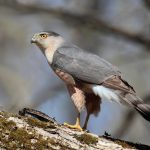
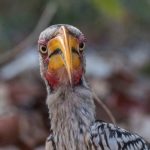
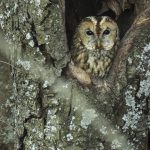
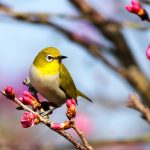


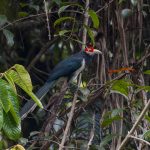
Stunning, a bird I would love to see! They don’t come this far north so I guess I’ll have to head south!
Brian, not sure exactly where you live in Northern China, but the Amur PFC might be somewhere near you .. I will send you the distribution map by Email.
Stunning birds, and great pictures of them.